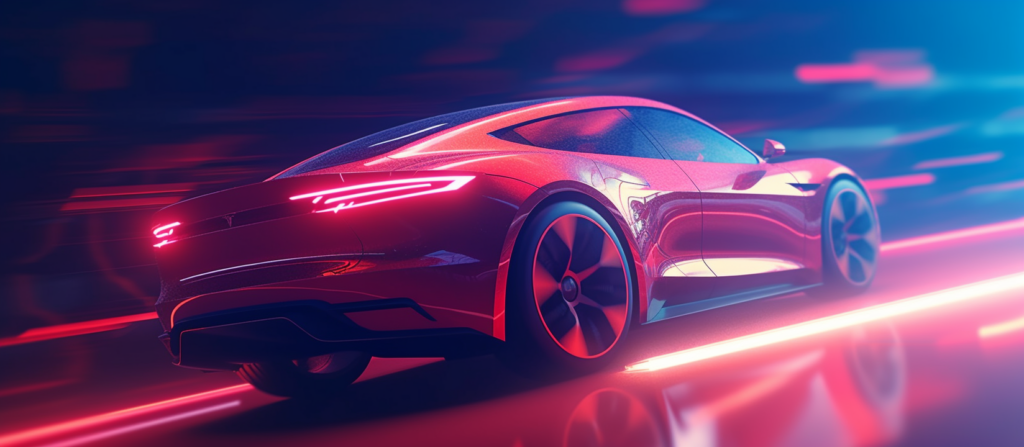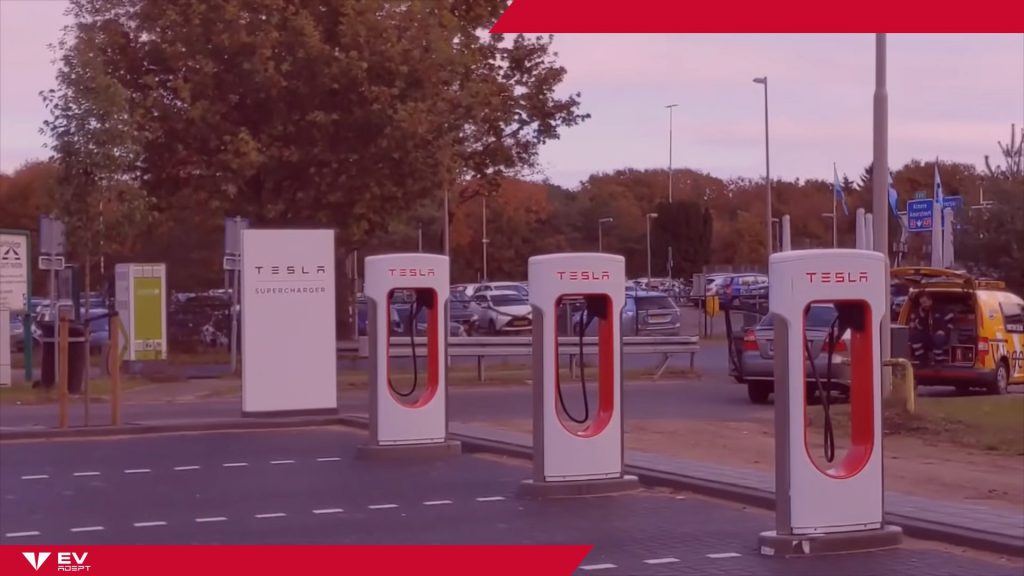The flexibility of Tesla’s large network of charging stations is one of the most attractive aspects for anyone who owns or plans to buy a Tesla car.
The power output of chargers is also increasing, with Tesla CEO Elon Musk announcement last month that he intends to increase the speed of some Superchargers from 250 kW to 300 kW. There is a global network of charging outlets built specifically for Tesla vehicles.
The Tesla brand continues to grow in popularity, and the network of charging stations is a key element of its success. Incorporating the charging station network into Tesla’s business model is a masterstroke.
Electric cars are certainly a great thing, but in many parts of the world people are reluctant to buy one because of the lack of range and charging infrastructure.
Tesla has a long-term strategy to increase the number of Supercharger stations worldwide and you can even set one up. So let’s take a closer look at how to charge your Tesla and use a Tesla Supercharger to see if the hype lives up to the reality.
Home charging and Tesla’s Supercharger network have attracted many customers to a Tesla car.
Compatible chargers
Tesla is rapidly increasing the number of Supercharger stations, with over 25,000 in North America.
Tesla has created a Tesla Destination (Level-2 chargers) and placed them in popular locations such as hotels, restaurants and other tourist attractions.
Destination chargers are a great addition to the Supercharger network because they allow you to charge your Tesla while doing other activities such as sightseeing, running a business or just relaxing. Destination chargers can be easily located in the vehicle or through the app.
How to charge any EV at the Tesla Supercharger?
Traditionally, the charging landscape has been a tale of two cities – Tesla and non-Tesla vehicles, each with their unique connector designs. But the winds of change are blowing with the introduction of the Tesla adapter and the Magic Dock, now available for pre-order.
These trailblazing devices have broken down the barriers, enabling Tesla vehicles to power up from fast chargers with CCS connectors, once the exclusive domain of Chevy, Porsche, BMW, and other non-Tesla vehicles. The Magic Dock, a marvel of innovation, is bridging this divide, opening up the Tesla Supercharger network to non-Tesla electric vehicles.
However, the Magic Dock is currently a rare gem, gracing less than 1% of stations. This rarity has sparked a surge in demand among non-Tesla owners for personal adapters. Ingeniously designed as an integral part of the Superchargers, the Magic Dock eliminates the need for Tesla to install new Superchargers to accommodate non-Tesla vehicles. Instead, they can simply retrofit existing Superchargers with the Magic Dock.
This ingenious solution offers non-Tesla EV owners the convenience of charging their vehicles at Superchargers without the burden of buying and carrying around an adapter. To harness the power of the Magic Dock, users must download the Tesla app, create an account, and set up a payment method. After selecting a charger at a Tesla station, the adapter can be unlocked via the app. The operation is as simple as pushing the handle into the dock and pulling it out to remove. However, patience is key, as initiating the charging process might take a few minutes.
See available Tesla Magic Dock locations here.

What options are available for tesla charging?
The fact that Tesla has its own charging infrastructure, as well as the Supercharger network, is a major part of the appeal for many customers. The goal is to provide a consistent level of service rather than having to change providers or utilize numerous apps and payment methods.
While Tesla offers a home charger as a Wall Connector (50 amp), you can also use the included 20-foot Mobile Connector (16 Amp) and NEMA 5-15 adapter for your car. This allows you to plug your car into a 120-volt outlet (NEMA 5-15) with three plugs, while charging at 2 to 3 miles per hour.
Tesla offers a set of adapters (ex. NEMA 14-50) that allow charging with different configurations, such as a 240V outlet. This gives a range of up to 30 miles per hour. Tesla Destination limit is 32 amp.
The Tesla Mobility Connector Pack includes two necessary adapters (NEMA 5-15 and J1772-to-Tesla). If you have specific requirements in your area, Tesla has a range of additional adapters available for purchase.
How do you charge a Tesla on Chargepoint fast charger? There is a solution for this, described in our article about the CCS1-to-Tesla adapter.
Tesla trip planner
#1 With the Tesla app, you can use it to browse for Supercharger stations on your phone’s screen and see their locations, fastest routes, and more. There’s also the in-car Trip Planner, which is useful for calculating charge times at any suggested stopping points.
#2 If you care about comparing prices or charging rates from different devices, take a look at the cost calculator for the tesla supercharger. Depending on the prices in your area, you can make adjustments to the settings.
Tesla Supercharger on the map
You may anticipate a great deal since the common Tesla Supercharger design has been established.
The ease of use aspect is one of the most appealing aspects about utilizing a Tesla Supercharger.
With none of the fuss that comes with charging an electric vehicle at any one of the many other EV charging stations in the world, this is all about simplicity and speed.
The Supercharger station, which is located along many popular routes and a few lesser traveled ones, will provide recharging points. You can find the Supercharger map here.
Some Tesla Superchargers have multiple charging points, but unlike competing networks, there are usually only a small number of charging points, resulting in long queues. They are usually located in areas where you can do other things while you wait.
It’s easy to find a free spot near one of Tesla’s charging stations and plug in your device. If there’s a free spot near one of the charging stations, you’re all set.

How to charge at a Tesla Supercharger
To get started, simply locate the desired charging station via your vehicle’s infotainment system, the Tesla app or search for charging stations – usually easy to find at most stops along the route.
If you live or visit a location with a Tesla charging station, park your car near the station and plug it in.
Third-party applications can also assist you in finding a Tesla Supercharger station, as seen in the US with Plugshare.
The Tesla charging port will flash green when everything is in order, signifying that the process has started.
Tesla has clearly gained a large number of customers compared to many of its competitors. Simplicity and convenience are important to consumers. The introduction of fast charging will make Tesla’s Supercharger network even easier to manage.
You may keep track of your journey with the infotainment system or the Tesla app if you’re leaving the vehicle to go about your business.
Home charging
Specifically, this means that to charge your Tesla, you have to do so at a Supercharger station.
Tesla has also developed different charging options for every situation. These range from convenient indoor charging to convenient and safe outdoor charging.
The Tesla Wall Connector not only looks great on your wall, it can also be installed by a certified electrician. So among EV Adept customers such installation is the most common service.
Tesla HPWC are designed to be upgraded wirelessly via Wi-Fi when needed.
If you need more charging flexibility, you can add more than one outlet to your building. This method is of course more expensive, but safer than using an EV extension cord.
At off-peak times, such as at night, electricity is often more efficient, and with Tesla’s timer, you can choose the best charging times in your area and make sure your car is ready when you need it.
Original device or a reliable analog, it does not matter on the part of the charging speed since there is a limit of 48 amps of consumption by most Tesla cars. Models used to be able to draw up to 80 amps, but that has changed. Hence, you can use any 50 amp charger and this will give you the maximum allowable charging power.
Just got my hands on the latest EV model and I’m impressed! The acceleration is mind-blowing. I remember my old gas car, barely crawling up hills. This is a whole new world. However, I’m a bit concerned about the battery life in colder climates. Any similar experiences?
I’ve been driving a similar model for a few months. The battery does drain faster in cold weather, but it’s manageable. Preconditioning the car while it’s still plugged in helps a lot. Also, keeping it in a garage overnight makes a significant difference.
Need some advice! I’m torn between two EV models. One has a longer range, but the other has better tech features. I do a lot of highway driving. Which one should I pick? Range is important, but I love tech perks.
Discovered a cool trick for extending EV battery life. It’s all about charging habits. Never charge to 100% unless necessary and avoid letting it drop below 20%. It’s made a huge difference for me. Thoughts?
Anyone else facing issues with their EV’s touchscreen? Mine becomes unresponsive at times. It’s frustrating, especially when trying to adjust settings while driving.
Had a similar issue. Turns out it was a software glitch. A quick visit to the service center fixed it. They updated the firmware, and it’s been smooth sailing ever since.
Just saw the announcement for the upcoming EV model. Looks promising, but I’m skeptical about the claimed range. Remember the hype around the last model? Turned out to be overblown.
Yeah, I’ve learned to take these announcements with a grain of salt. I’ll wait for real-world tests before getting too excited. Marketing can be misleading.
Anyone tried the new fast-charging station on 5th Ave? Heard it charges at an insane speed. Planning a road trip soon and wondering if it’s worth the detour.
Heads up, just heard about a recall on a popular EV model due to battery issues. Check your model and stay safe. Here’s the link to the manufacturer’s notice.
Thanks for sharing this. Just checked, and my car is on the list. Will schedule a service appointment right away. Good looking out!